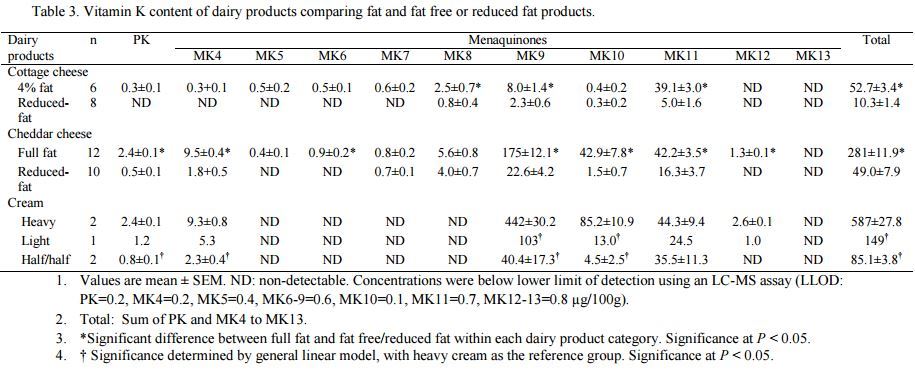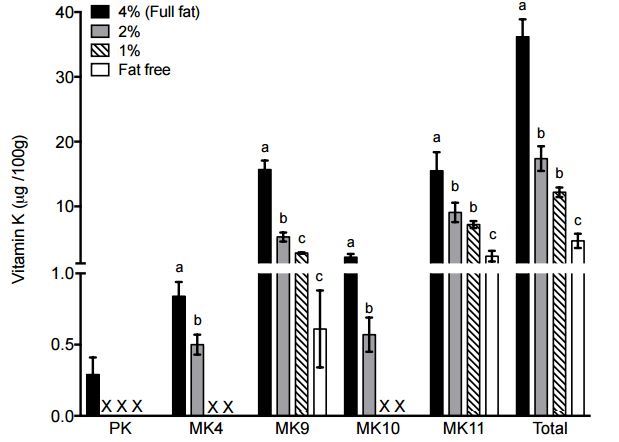Vitamin K in full-fat dairy products
Multiple Vitamin K Forms Exist in Dairy Foods
Curr Dev Nutr June 2017, cdn.117.000638; DOI: https://doi.org/10.3945/cdn.117.000638
Xueyan Fu, Stephanie G. Harshman, Xiaohua Shen, David B. Haytowitz, J. Phillip Karl, Benjamin E. Wolfe and Sarah L Booth
📄 Download the PDF from VitaminDWiki
Far less Vitamin K in no-fat dairy products

Far less Vitamin K in low and no fat milk

Background: The plant-based form of vitamin K (phylloquinone, PK, vitamin K1) has been well-quantified in the U.S. diet. Menaquinones (MK, vitamin K2) are another class of vitamin K compounds that differ from PK in the length and saturation of their side chain, but have not been well characterized in foods.
Objectives: The objectives of this study were to: 1) quantify PK and the different forms of MK (MK4 through MK13) in milk, yogurt, Greek yogurt, creams and cheeses; and 2) compare the MK contents of full-fat, reduced-fat and non-fat dairy products.
Method: All dairy samples were either obtained from USDA National Food and Nutrient Analysis Program or purchased from retail outlets. PK and MK concentrations in these dairy products were quantified by mass spectrometry technology.
Results: Full fat dairy products contained appreciable amounts of MK, primarily in the forms of MK9, MK10 and MK11. We also measured modest amounts of PK, MK4, MK8 and MK12 in these products. In contrast, there was little MK5-7 or MK13 detected in the majority of dairy products. The total vitamin K contents of soft cheese, blue cheese, semi-soft cheese and hard cheese were 506±63, 440±41, 289±38 and 282±5.0 μg/100 g, respectively. Non-fermented cheeses, like processed cheese, contained lower amounts of vitamin K (98±11 μg/100 g). Reduced fat or fat free dairy products contained ~5-22% of the vitamin K found in full fat equivalents. For example, total vitamin K contents of full fat milk (4% fat), 2% fat milk, 1% fat milk and non-fat milk were 38.1±8.6, 19.4±7.7, 12.9±2.0 and 7.7±2.9 μg/100 g, respectively.
Conclusions: To the best of our knowledge, this is the first report of MK contents of U.S. dairy products. Findings indicate that the amount of vitamin K contents in dairy products is high and proportional to the fat content of the product.
